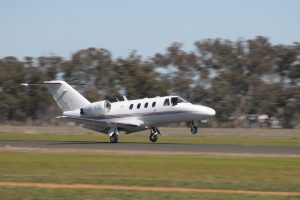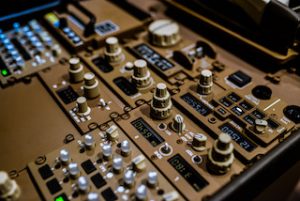Exploring A Private Jet For Sale
 The private jet market has become increasingly popular in recent years, offering individuals and businesses the opportunity to own luxury and convenience. A private jet for sale is more than just an aircraft; it represents a unique lifestyle, symbolizing success and providing unmatched flexibility in air travel. This article provides an in-depth look into the process of buying a private jet, factors to consider, and the benefits of ownership.
The private jet market has become increasingly popular in recent years, offering individuals and businesses the opportunity to own luxury and convenience. A private jet for sale is more than just an aircraft; it represents a unique lifestyle, symbolizing success and providing unmatched flexibility in air travel. This article provides an in-depth look into the process of buying a private jet, factors to consider, and the benefits of ownership.
Private jet for sale
If you discover a private jet for sale, consider various factors before making a decision. The type of jet, its intended use, and the buyer’s budget are all key considerations.
1) Type of jet
When searching for a private jet for sale, buyers will encounter different categories of aircraft. The primary types are light jets, mid-size jets, super mid-size jets, heavy jets, and long-range jets. Each type offers unique benefits, such as cabin size, range, and speed.
-
- Light jets: Ideal for shorter trips and smaller groups, these jets are affordable and efficient.
- Mid-size jets: Provide additional space and a longer range, making them ideal for regional flights.
- Super mid-size jets: Offer more room and superior performance for transcontinental flights.
- Heavy jets: These larger jets are designed for long-haul flights and can accommodate more passengers and baggage.
- Long-range jets: Perfect for international travel, these jets offer the highest performance and comfort.
2) Budget and financing
The cost of a private jet varies widely depending on the type, age, and condition of the aircraft. Light jets typically range from $2 million to $5 million, while larger, more luxurious models can exceed $70 million. Beyond the initial purchase price, buyers must account for ongoing maintenance, fuel, insurance, and operating costs.
Many buyers opt for financing options to make the purchase more manageable. Banks and specialized aviation lenders offer loans for private jet purchases. Some owners also choose fractional ownership, where they share the jet with other buyers, reducing the financial burden.
3) New or pre-owned jets
Another decision to make when searching for a private jet for sale is whether to buy new or pre-owned. A new jet offers the latest technology, warranty coverage, and customization options. However, a pre-owned jet can provide substantial savings, especially if it has been well-maintained and is in excellent condition. Many pre-owned jets have undergone extensive refurbishments, offering a near-new flying experience at a fraction of the price.
4) Aircraft usage
The intended use of the jet plays a significant role in selecting the right aircraft. Business owners may prioritize long-range jets with ample workspace, while families or luxury travelers might focus on comfort and amenities. If the jet is primarily for international flights, factors like fuel efficiency, cabin size, and the availability of rest areas will be top priorities.
Process of buying a private jet
Buying a private jet for sale involves several steps, from initial research to finalizing the purchase. This process requires careful planning and thorough evaluation of available options.
Step 1: Research the market
The initial step in purchasing a private jet is conducting market research. Buyers should familiarize themselves with different jet models, their performance specifications, and the prices associated with each. Online platforms, private jet brokers, and auction sites provide valuable data on available jets for sale.
Working with an experienced broker can significantly ease the search process. Brokers often have access to off-market jets and can help negotiate favorable terms. Buyers should also look at current market trends, including the demand for particular models and the pricing of both new and used jets.
Step 2: Set a budget
Once research is completed, buyers should establish a budget. This budget will guide the selection of jets and influence the decision-making process. It is important to account for both the upfront costs and long-term operating expenses. Buyers should consider maintenance costs, hangar fees, staffing, and fuel prices. In some cases, the purchase price may be a small part of the overall cost of ownership.
Step 3: Inspect the jet
Before purchasing any private jet, an in-depth inspection is necessary. A thorough review of the aircraft’s condition ensures that it is safe and in working order. Buyers should hire a qualified aviation expert to conduct a pre-purchase inspection. This inspection includes checking the jet’s engines, avionics, and overall structural integrity.
In addition to technical inspections, the jet’s maintenance history should be reviewed. A jet with a clean maintenance record and no history of accidents or major repairs is generally a safer bet.
Step 4: Negotiate the purchase price
Once a suitable jet has been found, the next step is negotiating the purchase price. Buyers can leverage information from previous research to ensure they are paying a fair price. Negotiations often involve discussing the aircraft’s age, condition, market demand, and any repairs or upgrades that might be needed.
Buyers should also be aware of additional costs, such as taxes, registration fees, and closing costs. Legal fees may also be involved, especially if the purchase is subject to international laws or regulations.
Step 5: Finalise the deal
After finalizing the price and terms, both parties will sign a purchase agreement. This legally binding contract outlines the terms of the sale, including payment schedules, warranties, and delivery timelines. Buyers may need to provide a deposit to secure the purchase, with the balance due at the time of delivery.
Once the paperwork is completed, the jet can be delivered to the buyer’s preferred location. If the aircraft is being purchased from another country, buyers must comply with customs regulations and may need to work with legal advisors to ensure the process is handled smoothly.
Ongoing costs of owning a private jet
Ownership of a private jet comes with ongoing costs that need to be factored into the overall budget. These expenses vary depending on the size of the jet, frequency of use, and location.
1) Maintenance and repairs
Regular maintenance is necessary to keep the jet in optimal condition. Depending on the model and how often it’s used, maintenance costs can range from $150,000 to $500,000 annually. These costs include inspections, repairs, and any upgrades or modifications to the aircraft.
Jets require periodic servicing, such as engine checks, avionics updates, and cabin refurbishments. Some buyers opt for extended warranties or service agreements to cover certain maintenance expenses.
2) Fuel and operating costs
Fuel is the largest ongoing costs for jet owners. Private jets can consume a significant amount of fuel, with larger jets requiring more than 500 gallons per hour of flight. Fuel prices fluctuate, but owners should expect to spend between $2,000 and $10,000 per flight hour, depending on the jet’s size and fuel efficiency.
In addition to fuel, owners must account for the cost of crew salaries, insurance, hangar fees, and landing fees. Hiring a crew, which typically includes a pilot and co-pilot, can add anywhere from $100,000 to $300,000 annually in salaries and benefits.
3) Insurance
Insurance for private jets is another ongoing cost. The price of insurance depends on the jet’s value, age, and the level of coverage required. Insurance premiums typically range from $20,000 to $100,000 annually. Liability coverage, hull insurance, and medical evacuation coverage are standard in most policies.
Private jet ownership vs. fractional ownership
For those who may not use their jet frequently or wish to reduce costs, fractional ownership is an alternative. In a fractional ownership arrangement, the buyer purchases a share in a jet rather than the entire aircraft. This allows for the benefits of private jet travel at a reduced cost.
Fractional ownership companies like NetJets and Flexjet offer jet-sharing programs where owners have access to a fleet of jets, with each owner utilizing their share based on a predetermined usage plan. This option significantly lowers the upfront cost and maintenance expenses of owning a private jet, while still providing many of the benefits of private air travel.
Benefits of owning a private jet
Owning a private jet offers numerous advantages, especially for those who value time and comfort. The primary benefits of private jet ownership include:
- Time savings: Private jet ownership allows for total flexibility. Owners can set their own schedules, avoiding delays and long security lines. This is especially beneficial for business executives and high-net-worth individuals who need to travel frequently for work or leisure.
- Privacy and comfort: Traveling on a private jet offers a higher level of privacy and comfort compared to commercial airlines. The cabin can be customized to suit the owner’s preferences, with luxurious seating, catering options, and entertainment systems. Passengers can also conduct business or relax without the distractions and crowded conditions of commercial flights.
- Direct routes: Private jets allow for direct flights to smaller airports that may not be serviced by commercial airlines. This means travelers can access more destinations without layovers or connecting flights. The flexibility to fly directly to specific locations reduces travel time and increases convenience.
- Enhanced safety: Private jets offer an added layer of safety. Owners can choose to fly with trusted, experienced pilots and ensure the jet is maintained to the highest standards. In addition, private jets often fly at higher altitudes and avoid the congestion of busy airways, offering smoother and safer travel.
In conclusion
Buying a private jet for sale is a complex but rewarding process. It requires careful planning, research, and a significant financial investment. However, the benefits of ownership, including time savings, privacy, and convenience, make it an attractive option for many. Whether buying new or pre-owned, understanding the different types of jets, ongoing costs, and maintenance requirements is crucial for making an informed purchase. For those who prefer a more flexible, cost-effective option, fractional ownership offers an alternative that provides access to private jet benefits without the full commitment of ownership. With careful consideration and the right support, purchasing a private jet can be a transformative decision for both business and personal travel.










